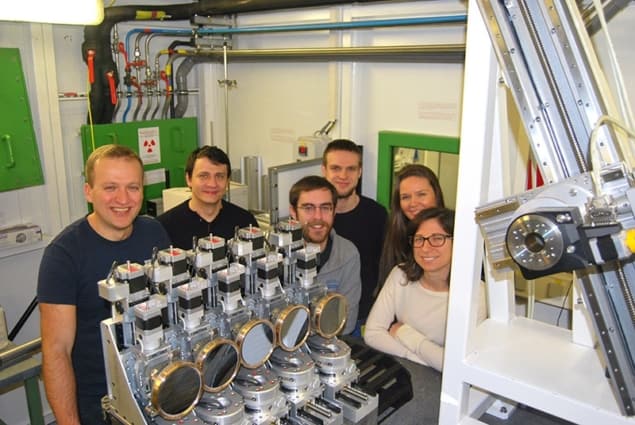
By accident, scientists in Germany, Russia and Sweden have discovered a compound containing a chemically-stable form of plutonium that has never been observed before. In a series of attempts to synthesize plutonium-containing nanoparticles, the team led by Kristina Kvashnina at the Helmholtz Centre Dresden-Rossendorf found that a compound containing the element in its fifth oxidation state can exist for long periods of time. Their discovery could provide new and crucial information that could help scientists predict the changing properties of harmful nuclear waste over millions of years.
Even when the plutonium waste produced by nuclear power plants is securely stored deep underground, it can eventually leak out into the surrounding environment. This happens when waste interacts with materials in the ground including clay and mineral ores to form suspended liquid mixtures. However, researchers studying the effect now understand that its damage is lessened by reactions that form stable plutonium compounds.
Kvashnina’s team synthesized nanoparticles of plutonium oxide (PuO2) using plutonium atoms in different oxidation states. Then they studied the nanoparticle’s structures using a combination of theory and X-ray observations at the European Synchrotron Radiation Facility in France. As expected, they found that plutonium in its third, fourth and fifth oxidation states formed nanoparticles very quickly. But when in the sixth oxidation state, the reaction seemed to take place over a more unusual, two-step process.
Significant change in our understanding
The researchers deduced that the intermediate step could involve a compound containing a stable form the fifth state. Such a form had never been observed experimentally, but could, in theory, remain solid and stable over periods of several months. If correct, this would be a significant change in our understanding of the chemical properties of nuclear waste, leading Kvashnina and colleagues to be sceptical of their result at first.

Keeping it safe forever
To confirm their prediction, the team used the spectroscopic technique of high-energy resolution fluorescence detection at two specific absorption edges of the intermediate compound. These edges are sharp distortions in compounds’ absorption spectra at wavelengths where photon absorption energies correspond to electron transitions — and are the only way to reveal the specific oxidation states of the elements they contain. When combined with theoretical calculations, Kvashnina’s team confirmed for the first time that a stable form of the fifth oxidation state had indeed been observed, within the compound NH4PuO2CO3.
The physicists then confirmed this compound’s stability by drying it out of liquid suspension and measuring the shape of its absorption spectrum over time. Even after three months, the shape of the line remained the same. The team’s result could offer significant new insights into the activity of nuclear waste over million-year periods. By accounting for stable solid phases containing the fifth oxidation state, theoretical predictions of these behaviours could become more accurate; potentially allowing researchers to update their ideas about how nuclear waste should be stored.
The study is described in Angewandte Chemie.



